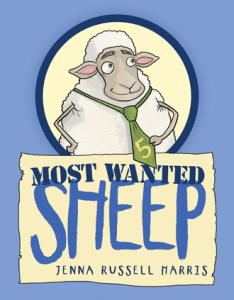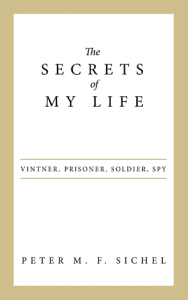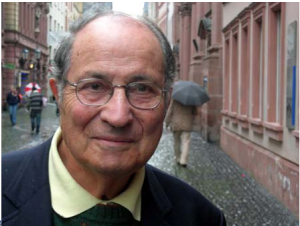From time to time, Archway Publishing turns over its blog to its authors, giving them the opportunity to share stories and perspectives about their individual self-publishing journeys. The following are the words of Jenna Russell Harris, author of “Most Wanted Sheep.” For more on Jenna, visit her on Facebook and on her book page and on Twitter at her account and her book’s account. Download the Archway Publishing free publishing guide for more information on our supported self-publishing services.
- Tell us a little bit about your book. What inspired you to write it?
 Most Wanted Sheep is a fun and educational story parents can use to teach children counting 1-10 and colors. It’s about a counted sheep named Woolard, also known as Number 5. One day he decides that he doesn’t want to be counted anymore. He leaves his flock in search of greener pastures. Through self-exploration and his effort to find happiness, Woolard realizes that his number really counts and his happiness was in his very own backyard! The idea for Most Wanted Sheep was inspired by my son. He was chasing a ball through the house but couldn’t say ball so he was saying bah, bah, bah. I called him my little sheep and Most Wanted Sheep was born.
Most Wanted Sheep is a fun and educational story parents can use to teach children counting 1-10 and colors. It’s about a counted sheep named Woolard, also known as Number 5. One day he decides that he doesn’t want to be counted anymore. He leaves his flock in search of greener pastures. Through self-exploration and his effort to find happiness, Woolard realizes that his number really counts and his happiness was in his very own backyard! The idea for Most Wanted Sheep was inspired by my son. He was chasing a ball through the house but couldn’t say ball so he was saying bah, bah, bah. I called him my little sheep and Most Wanted Sheep was born.
- What is the one message you would like to convey to your readers?
I want children to know that exploring who you are is an important part of life and that it’s ok to be different. I want children to know that reading can be fun and creative. I hope to encourage and inspire children to dream, imagine, read and write. My goal is to positively influence children through my writing.
- What are 5 things you’ve learned about self-publishing?
I learned that self-publishing is not as easy as I thought it was. It takes a lot of preparation, communication, hard work and time. It allows you to be in control of your book. Archway Publishing offers different packages so that authors can choose how much money, time and effort they wish to put into their books. I was able to take an active role in deciding what type of illustrations I wanted, the layout of the book, the font style and more. Archway Publishing has a team of experts to guide you through each step in the process with recommendations, support and feedback. I discovered that marketing after self-publishing takes time, planning and much effort to get your book into the right hands and gain exposure necessary to be successful. Archway also offers multiple marketing options and guidance in choosing the best marketing solution in order for you to reach your appropriate audience and attain your goals. Your work deserves careful editing multiple times to ensure that the contents of your book are accurate. I also learned that self-publishing is not a one man/woman job. It takes a whole team of people working together to bring your creation to life. If you choose the right company to walk you through each step and believe in your vision then the end result should be perfection! When you hold your book in your hand it is the most rewarding feeling!
- What do you love most about self-publishing and would you recommend it to other authors?
 I love the fact that I am in control of the book and involved in every step of the way. I was able to work closely with Archway’s art department and describe my vision to them one illustration at a time. If I didn’t like something and changes needed to be made the art department was accommodating and worked quickly to make those changes. I also liked the fact that the self-publishing package I chose provided me with everything I needed from the ISBN number to illustrations.
I love the fact that I am in control of the book and involved in every step of the way. I was able to work closely with Archway’s art department and describe my vision to them one illustration at a time. If I didn’t like something and changes needed to be made the art department was accommodating and worked quickly to make those changes. I also liked the fact that the self-publishing package I chose provided me with everything I needed from the ISBN number to illustrations.
- What advice would you give to aspiring authors?
When exploring your options for publishing, do your research and make sure you choose a company that provides you with multiple packages to choose from. I would also advise aspiring authors to have a marketing plan in place before their book goes live. Carefully consider what media outlets you will send press releases to in order to gain exposure for your book. Have a plan because when you self-publish, you decide how much money, time and effort goes into your book and that is directly correlated with how successful your book will be.
Archway Publishing is always looking for content for its blog. If you’re an Archway Publishing author and would like to share an idea for a guest blog post, please tweet the Archway Publishing Twitter account @ArchwayPub and Like the Archway Publishing Facebook page.




